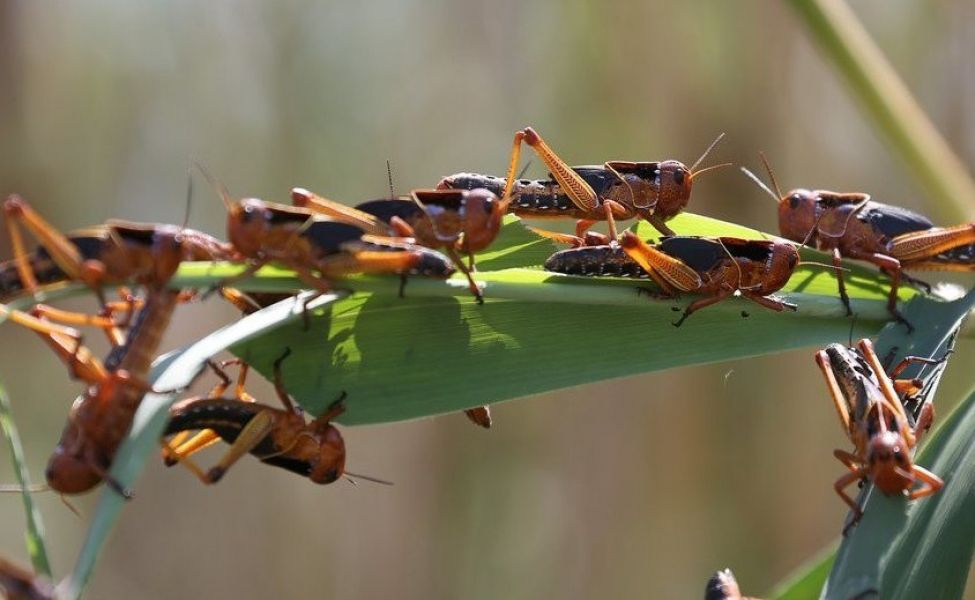
The Kyrgyz government continues to treat infested areas
Kyrgyzstan has called for stronger regional cooperation among Central Asian countries in response to a large-scale locust infestation threatening vast areas of farmland.
According to the Ministry of Water Resources, Agriculture, and Processing Industry of Kyrgyzstan, surveys across 114,000 hectares of agricultural land revealed locust presence on nearly two-thirds of the area. More than 74,000 hectares have already been treated with pesticides.
“Locusts are herbivorous insects capable of forming large migratory swarms under favorable population and climate conditions. These swarms can devastate entire crop fields within days,” the ministry warned.
The infestation is particularly severe in southern Kyrgyzstan, where early harvest cycles and warmer weather provide ideal breeding conditions. Mobile task forces and trained specialists are actively monitoring and treating affected areas. Operations are expected to continue through August, coinciding with the end of the locusts’ life cycle.
To coordinate a broader response, Kyrgyz authorities have reached agreements with Kazakhstan and Uzbekistan. The trilateral effort aims to:
- Implement international phytosanitary standards
- Enhance data sharing on locust distribution and life cycles
- Coordinate pesticide application in cross-border agricultural zones
Uzbekistan has introduced a new electronic tracking platform that records egg-laying sites and treatment zones. This system improves monitoring of locust movements and helps mitigate the risk of transboundary migration.
The initiative underscores growing regional concerns over food security, as shifting climate patterns increase the frequency and severity of locust outbreaks across Central Asia.
In Bishkek, concerned residents have recently reported a rise in sightings of large insects resembling locusts. However, agricultural experts have clarified that these are bush crickets (Tettigoniidae), which are harmless to crops and humans.
“These solitary insects have long antennae and, particularly in younger specimens, underdeveloped wings. Unlike true locusts, they do not form destructive swarms,” the ministry stated.
The Kyrgyz government continues to treat infested areas and has urged farmers and local communities to promptly report new sightings. Officials emphasized that coordinated regional action is essential to contain the outbreak and safeguard agricultural productivity.
As summer advances, Central Asia is expected to face further agricultural and ecological challenges, underscoring the need for real-time data sharing and cross-border pest management strategies.
Photo credit: gro.gov.kg.
YOU CAN SHARE YOUR OPINION AND DISCUSS THE ARTICLE ON OUR TELEGRAM CHANNEL!














